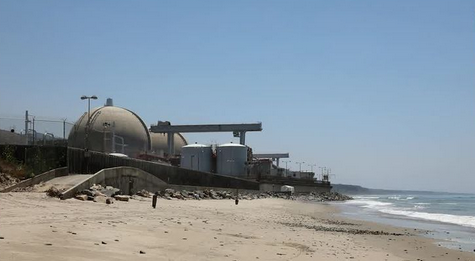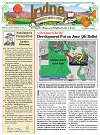 In the face of federal and state inaction, Irvine has begun exploring the idea of creating a local plan to move highly dangerous nuclear waste now stored at the San Onofre Nuclear Generating Station site — located between San Clemente and Oceanside — to a more secure and safer facility.
In the face of federal and state inaction, Irvine has begun exploring the idea of creating a local plan to move highly dangerous nuclear waste now stored at the San Onofre Nuclear Generating Station site — located between San Clemente and Oceanside — to a more secure and safer facility.
Mayor Larry Agran convened a public hearing on September 30th to hear testimony from nuclear industry experts, Southern California Edison (the San Onofre plant’s operator), UCI experts, and local citizens and officials who have long been involved with the nuclear waste issue.
All of the speakers agreed that the current situation at the San Onofre plant site was not intended to be permanent, and that the federal government is still decades away from having a national waste repository, originally promised for 1998.
The San Onofre plant was closed in 2013 and much of it has been disassembled and removed. However, some 3.5 million pounds of spent nuclear fuel are still stored on the site, between the I-5 Freeway and the Pacific Ocean, in 123 cylindrical canisters about 18 feet long by 5 feet wide made of 5/8-inch-thick steel. Fifty older canisters are stored on their sides in a concrete structure near Interstate 5. The rest are stored vertically in individual concrete silos behind a 15-foot seawall about 100 feet from the ocean mean high tide line.
Although Southern California Edison representatives insisted that the waste at San Onofre is stored safely and presents no threat to the surrounding community, others pointed to risks inherent in both the technology being used and the location just a few dozen yards from the Pacific Ocean.
In testimony and written submissions, Councilmembers were told that the canisters were not designed for long-term storage and could in time be subject to cracking and corrosion that could make them hazardous to move or even cause leaks. The canisters are cooled by a passive airflow system that could be blocked by floodwater or debris such as sand and seaweed, resulting in critical overheating within 32 hours. There is no equipment onsite to remove or repair the canisters, nor to repackage the waste from a damaged canister.
Meanwhile, the site is immediately adjacent to the ocean, and could be flooded by a tsunami or even king tides as sea levels slowly rise over the next two decades. It is also in an earthquake zone. The canisters are not in a secure reinforced structure and are vulnerable to terrorist attacks from the freeway or the sea.
Dr. Greg Jaczko, a former chair of the federal Nuclear Regulatory Commission, said that there is “too much acceptance” that the current situation can be extended as long as needed. “I don’t think this is the most responsible action,” Jaczko stated. “I cannot stress enough that the current site is not a permanent storage location. The fuel will have to be moved.”
He suggested the target date to get the San Onofre waste to a more secure storage location should be 2035.
Mayor Agran noted that “the top priority of government at any level is to keep people safe. Our job on this Council is to keep Irvine residents safe.”
Agran continued: “Recognizing that we will not see a federal plan adopted and implemented for safe storage anytime soon, we need a locally developed safe storage plan — a plan that would safeguard us in Southern California for the next 100 years or more, even if no federal repository is forthcoming. The way I see it, we in Irvine, hopefully joined by other nearby cities, can be instrumental in leading the preparation of that plan.”
The outlines of that plan, Agran said, would be removal of the waste to a secure hardened facility well above sea level in the nearby hills inland from the I-5 Freeway on Camp Pendleton.
Mayor Agran said he plans to bring the matter back to the Council at a regular meeting later this year as an action item to commission the drafting of a detailed removal and interim storage plan.
Agreeing with Mayor Agran, Councilmember Mike Carroll said: “It seems like science fiction, but it’s far worse than that: it’s scientific fact. … It’s unbelievable that that stuff is sitting there and we drive past it. I’ve driven my family past it. And it’s sited right next to the energy and power of the Pacific Ocean. It’s completely inexcusable. You don’t have to be for or against nuclear energy, you just have to recognize that for whatever reason, good or bad, we have 123 canisters that could each cause its own Chernobyl sitting right next to the Pacific Ocean in an earthquake zone.”
- Mayor Agran Convenes Public Hearing to Discuss San Onofre Nuclear Waste - November 5, 2025
- Council Passes 2025-2027 City Budget - June 24, 2025
- The City’s Lowest Wage Earners Get a Pay Raise - June 22, 2025



